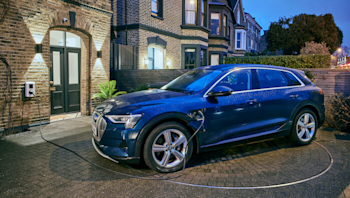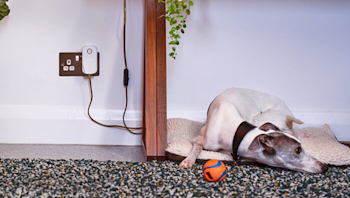The National Grid: what it is and how it’s changing
It’s something we all take for granted. You flick a switch and just know the power will be there in an instant to light your room. But if you’ve ever wondered where electricity comes from and how it reaches your home, here’s a quick insight into how the National Grid works – and how it’s changing for the better…
What is the National Grid?
The grid is a clever and rather complicated network ofpowerlines, pipelines, storage facilities, interconnectors, and power stations all linked together to create and send energy across the UK. So that cup of tea and slice of toast you had this morning? You can thank the National Grid for that!
How does the National Grid work?
The National Grid has three main parts: generation, transmission, and distribution:

The first stage is where power is created. This can be done by coal and natural gas power plants, nuclear power plants, wind turbines, solar panels, and hydroelectric dams.
Next, so the electricity can be carried across transmission lines without losing energy as it travels across long distances, the voltage is increased by a ‘step-up’ transformer.
Finally, electricity arrives at a distribution network where ‘step-down’ transformers convert it back to lower voltages so it can be used safely in your home.
In the UK, the National Grid is operated by National Grid plc. There are 14 different distribution networks, managed by six different operators.
Why do we need to balance the grid?
Keeping our network balanced at the 50 Hertz mark is seriously important. Just 1% in either direction and there’s a risk of damaged equipment and infrastructure – and an increased risk of blackouts.
How do we balance the grid?
Currently, we balance the grid by temporarily controlling power station output, so they produce more or less energy as needed. As gas, coal, and nuclear power stations create predictable levels of energy, it’s easy to adjust their output. And that’s great for balancing the grid.
Renewable energy, however, is a slightly tricker prospect…
The green energy revolution
Since 2014, the amount of renewable electricity created in the UK has more than doubled, and in 2020 green energy overtook fossil fuel generation for the first time. And further growth is expected, which is good news for the planet.
But it brings fresh challenges because green energy sources – such as wind and solar – rely heavily on the weather, so their generation can be variable and unpredictable. And this makes balancing the grid much harder.
With energy generated by coal power stations decreasing (Britain’s last coal power plant closes in 2024), we’ll need to find new ways to keep the grid balanced as we use low-carbon tech to power our homes.
Find out how Hive can help you do your bit
Green energy is changing flow of energy
It’s not just how energy reaches you that’s changing. Thanks to solar panels and heat pumps, now more of us are generating our own green energy – and even feeding it back into the grid. We’re also using more electricity to heat our homes and power our cars, which places greater demand on the grid and its infrastructure.
So as we change how energy is created, how it flows and where it’s coming from, we also need a system that can control, manage and balance the grid.
And that’s where intelligent energy management comes in, also known as Demand Side Response.
Traditionally the electricity system had a supply side (generates and distributes energy) and a demand side (receives and uses energy, such as our homes and businesses). Demand Side Response actively controls how energy is stored and released on the demand side, and helps the whole system run smoothly and predictably as we rely more on renewable energy. It also helps the grid be more flexible and efficient.
Our homes become power stations
At Hive, we’ve been working on our own DSR. We connect our customers together in a network, storing and transferring electrical energy across your batteries systems, electric vehicles, solar panels and heat pumps.
So now our homes and businesses are like mini power stations, all contributing to and benefitting from the network. We manage all this in real time using mind-boggling calculations and whip-smart automation technology.
At any one-time, we’re balancing the demands of the grid, redirecting renewable energy from full batteries to prevent waste,and making us all a part of the energy grid itself.







